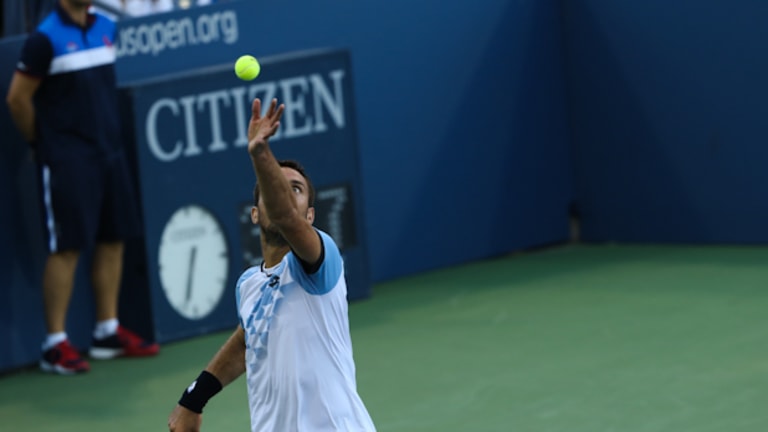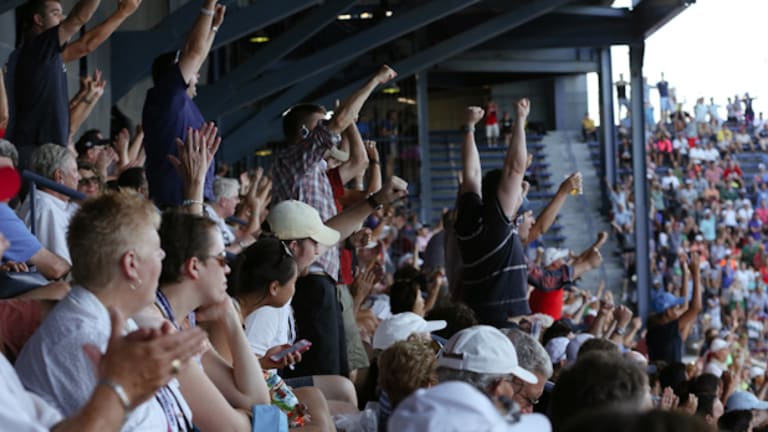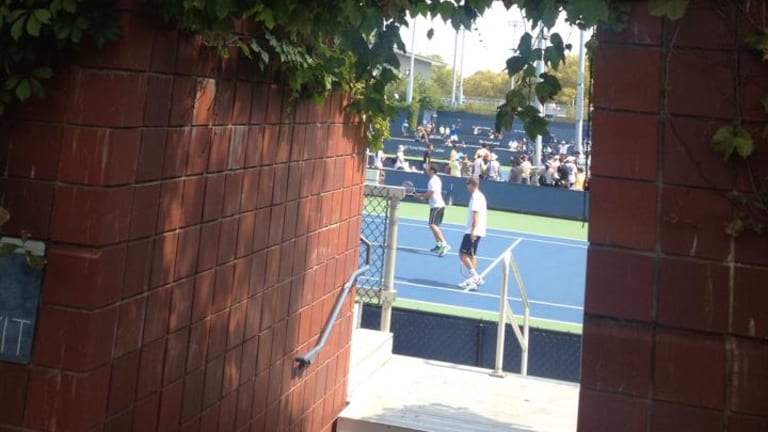NEW YORK—In reaching the fourth round of the U.S. Open, 68th-ranked Donald Young has twice come back to win matches from two sets down. I didn't see any of his first turnaround, in the first round against No. 11 Gilles Simon, but I saw every point of his next trick, an escape act in the third round against No. 22 Viktor Troicki. Young has been able to conjure his best tennis at just the right moments thus far; even his four-set win over Aljaz Bedene in the second round was from a set down. With all due respect to Fabrice Santoro, Young has been nothing short of magical so far at Flushing Meadows.
Young’s 4-6, 0-6, 7-6 (3), 6-2, 6-4 win over Troicki wasn’t just unlikely, it was one of the tournament’s most dramatic performances. The stage was Grandstand, which after 38 years will vanish (for real) as part of the National Tennis Center’s massive, multi-year renovation. Barring a schedule change in the second week, Young and Troicki were the last two men to play a singles match on the beloved and quirky court.
Grandstand has hosted its share of memorable contests since the Open moved to Flushing in 1978, many involving a underdog U.S. crowd favorite. This one goes right up there alongside Brad Gilbert’s win over Boris Becker in 1987, and Taylor Dent’s marathon win from match point down in 2009, among others.
Like my iPhone battery, Troicki’s two-set lead evaporated completely just about three hours into the match. I had been tweeting courtside; today, I want to finish what I started, much like Young’s latest comeback.


